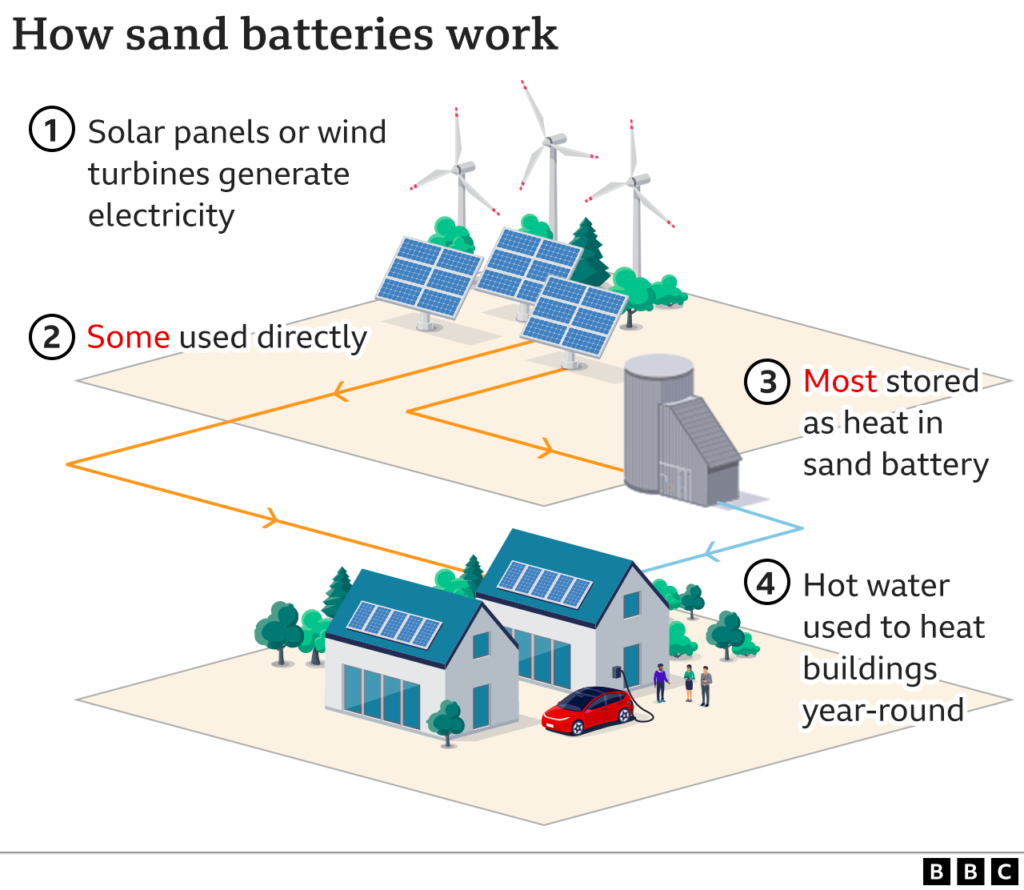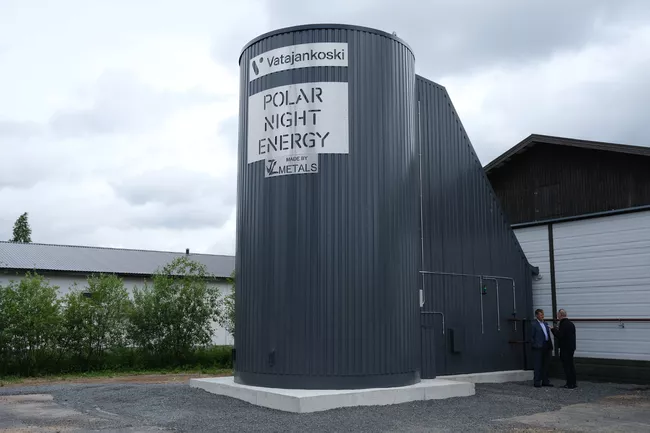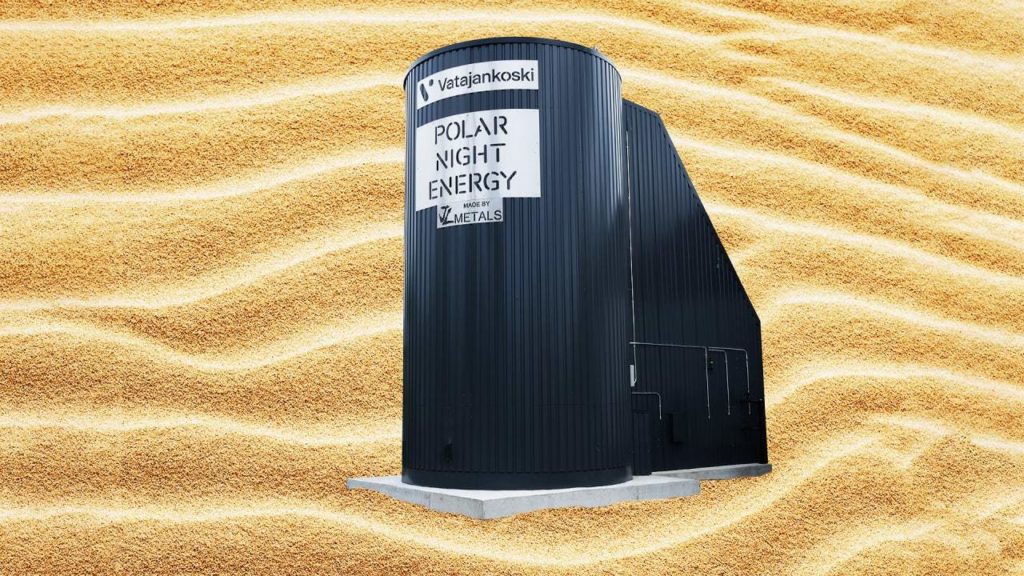Finland installs World’s first Sand battery that is capable of storing energy for several months providing a cheap and clean surplus electricity.
The advent of renewables also brought along a difficulty of its storage, when its operational in large-scale, as the world is eyeing to shift to renewables though. Conventional batteries like lithium-ion and others, despite posing as a storage medium, may not be economical and compact for a mass-power generation.
And Finland researchers hence, derived out a way to put the energy to store for later retrieval, in sand. They not only derived, but experimented, installed and made the sand-battery to work, which is what explained below. `
A Finnish company, Polar Night Energy (PNE) has installed the first commercial sand battery, that stores energy for several months, and now the battery serves by warming homes in winter and fetching out warm waters to offices and homes.
PNE’s sand-battery stores renewable energy like wind and solar power as heat in sand. The technology provides a way to refine cheap and clean surplus electricity to valuable heat in an affordable way to be used when most needed, explains the company’s website.
How does a Sand-Battery work?
Likely as done to nominal batteries, the surplus electricity of renewables is directed to the sand-battery and it uses resistive heating to increase the temperature of air, which is then transferred to sand through a heat exchanger.
Basically, they allowed current to pass through the sand, heating up the air and transferred the heat in air to the sand. Sand withstands multiple hundred degrees of Celsius (as their melting temperature is roughly 17000C) and stores the heat at around 5000C for many months together, proving it to be the viable long-term energy-storage solution.
The stored energy could be used as a heating device during winter and to lay warm waters for use.

World’s First Sand-Battery

PNE’s first commercial sand battery locates in a town of Kankaanpää in western Finland. The battery takes a 4 x 7 metre steel container to get filled with hundreds of tonnes. Currently, the battery powers the central heating system for the district. When required, the hot air in the battery can be used to warm water, which is then pumped to the offices and homes of neighbourhood.
Having 100kW of heating power, and a total storage capacity of 8MWh, the sand-battery allures the researchers as it is much cost-efficient than the others of the kind, costing less than $10/kWh and once operational can last for tens of years.
However, they possess comparatively much less round-trip efficiency i.e., converting the heat back to electricity than the Li-ion batteries, BBC reported. Patrick Davenport, a NREL (National Renewable Energy Laboratory) researcher asserted that although the round-trip efficiency of sand batteries isn’t a match for Lithium-Ion, they more than make up for the loss by being highly scalable, and for their exceedingly low capital costs.
Besides, just for its storage of heat and powering the heat for the people, the battery would be a wanted helpful one for many industries.
Related Posts
PNE also has a smaller 3 MWh operational test pilot in Tampere, providing heat for a couple of buildings there. The company exploited this pilot project to analyze, evaluate and optimize the sand-battery.
Being comparatively beneficial at this economical level, sand-batteries could surely hit the ground across the world, serving the places where it’s necessary, researchers assert.






